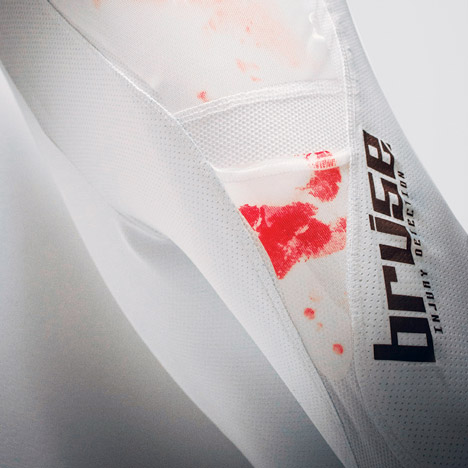
Bruise suit shows para-athletes where they are injured
A group of Royal College of Art students has developed a suit that enables athletes with sensation loss to instantly detect and assess the severity of sporting injuries.
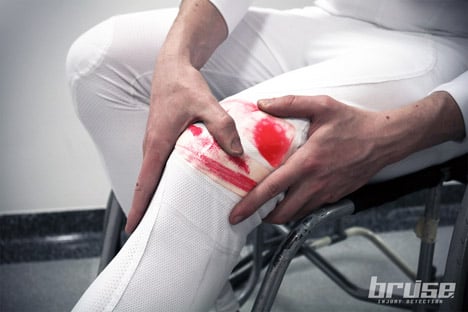
Bruise uses pressure-sensitive film to visually communicate the severity of injuries. Sections of the garments that cover parts of the body considered to be most at risk during normal sporting activities are covered with disposable, film sheet inserts.
The film changes colour on impact using a chemical reaction so that injured areas can be spotted easily and treated quickly.
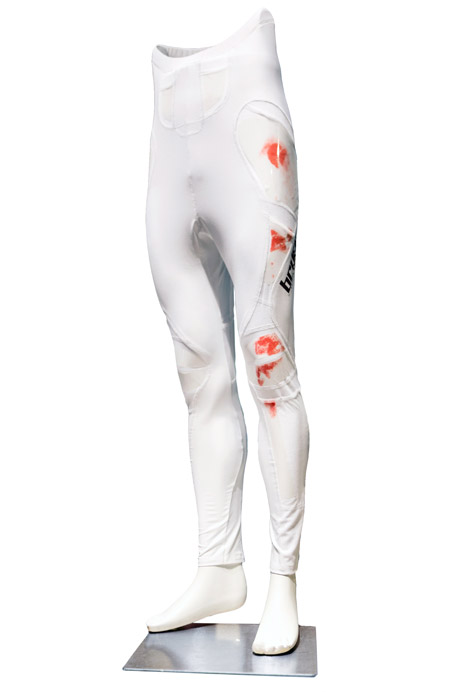
Developed by Royal College of Art students Dan Garrett, Ming Kong, Lucy Jung and Elena Dieckmann, Bruise is made of a "sweat-wicking stretch fabric" for a comfortable, supportive fit.
Mesh inserts and ergonomic seams ensure the fabric is breathable and flexible enough to support complete freedom of movement.
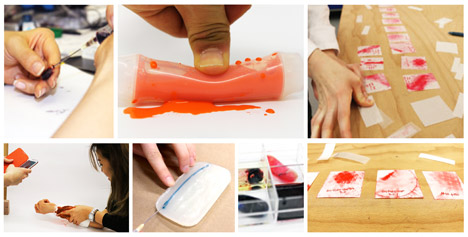
"The initial idea came from an interview with Paralympic sit-skier, Talan Skeels-Piggins, who mentioned complications in detecting and assessing the severity of injuries in his legs following crashes in training or when competing," said the designers.
For athletes who have reduced or no sensation in a particular part of their body, it can be difficult to differentiate between a bruise and a more serious injury.
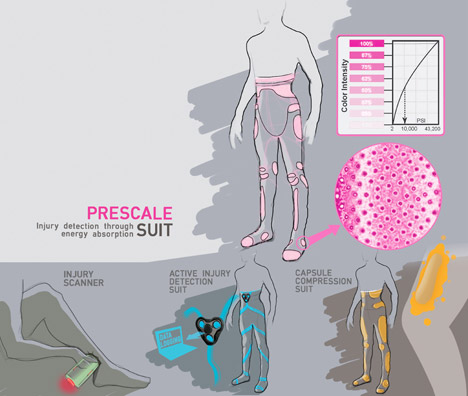
Visual symptoms often appear more slowly because of poor circulation and so injuries can go unnoticed. The resulting delay in treatment can hinder performance and even become life-threatening. Conversely, careful athletes with non-serious injuries may waste valuable training time making unnecessary trips to hospital.
"We saw an opportunity to address this, allowing athletes to keep their focus on training, competing and winning," said the designers. "The athletes we talked to and worked with are single-mindedly focused on being the best they can in their sport. We took the insights from working with them and came up with a solution that helps them to do that."
The Bruise suit gives immediate feedback on whether an impact could cause serious injury – with the intensity of the colour produced by the film indicating the severity of the impact – enabling athletes to take the appropriate action.
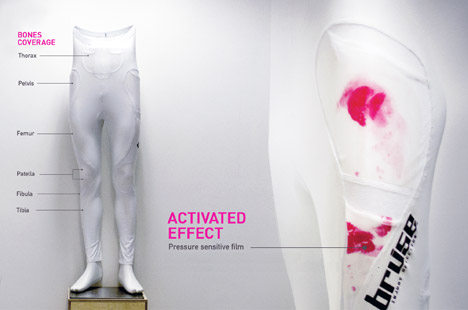
"We organised workshops and interviews with Paralympic athletes to understand their professional and personal life patterns," said the designers. "We manufactured and tested more than 30 materials and structures that could potentially visualise impact, including silicone coated paint capsules and multi-layered ink papers."
They settled on a pressure-sensitive film, which was tested on dummies in a drop tower and then on the hind and fore shanks of a dead sheep as "suitable replacements for the femur and tibia".
The team have manufactured multiple versions of Bruise and are now working with athletes in real training situations to make improvements to the suit.

"The success of the initial tests allowed us to move forward with the knowledge that Bruise could produce accurate, repeatable and useful results for athletes," said the team. "Further testing will allow us to carefully design the suit for optimum performance in different sports."
Bruise was developed by the Royal College of Art students from Innovation Design Engineering and Global Innovation Design courses, and was shortlisted for this year's James Dyson Award for innovative student products.